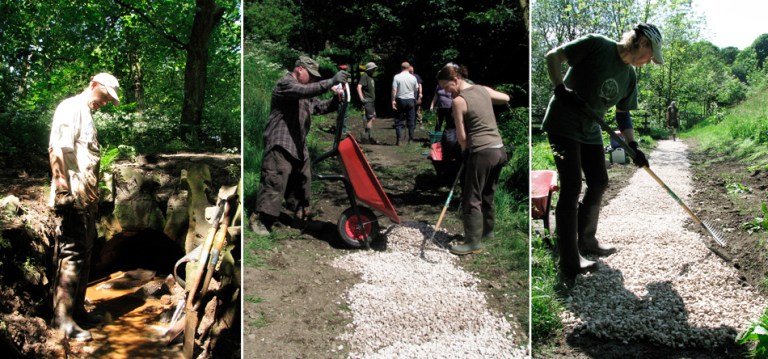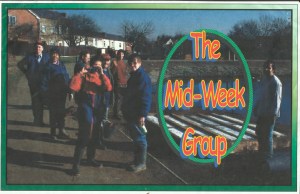Sunday 31st July 2022 – Charcoal Making
Charcoal has load of uses, from scribbling on paper for an art project, filtering air and liquids, use in pharmaceuticals, even mouthwash, but most people use it to cook stuff on a summer’s day. For 30,000 years charcoal has been used as fuel for cooking. 3000 years ago it was used for smelting metals and glass making; it powered the early years of the industrial revolution until being replaced by coke, which is made from coal but using the same processes as this used to make charcoal. The fuel for charcoal came from coppices, woodland that could be sustainably harvested repeatedly over decades of centuries, but as coal and coke became the preferred fuel charcoal making declined. As charcoal making declined coppice management declined, continuing until more recent times when the value of a coppice to wildlife and conservation was recognised.
Charcoal is made through the magic of smothered combustion. A kiln, there are many kinds, is stacked with wood and then set on fire. At a critical point the kiln is sealed to prevent oxygen getting into the combustion process, hence being smothered. The heat cause the release of volatile gases from the woody fuel maintaining the process. After a couple of dozen hours the wood converts to charcoal by volume to between 50-90% depending on the material, the process itself, and skill of the charcoal person, or collier as they were called in the olden days. The more dense the wood the higher the quality of charcoal.
As mentioned, today charcoal is mostly something people see in their barbecue grill, this has created an industry that has and often still uses wood from illegal logging operations in rainforests across the world putting the survival of endangered species such as the mountain gorilla at risk. The extract below is from Wikipedia’s entry on charcoal which you can find here .
“Recent assessments of charcoal imported to Europe have shown that many charcoal products are produced from tropical wood, often of undeclared origin. In an analysis of barbecue charcoal marketed in Germany, the World Wildlife Fund finds that most products contain tropical wood. As a notable exception, reference is made to barbecue charcoal imports from Namibia, where charcoal is typically produced from surplus biomass resulting from bush encroachment.”

So, if you’re buying charcoal make sure it’s from a sustainable source, and preferably produced locally so as to reduce its carbon footprint. Carting burnt wood thousands of miles just to burn your sausage is a bit extreme and not good for the planet.
However, the charcoal we made on today’s adventure in the woods came from coppicing and woodland management operations at Rivington Terraced Gardens. Liam from Groundwork/Rivington Heritage Trust took us through the steps of setting up the kiln, stacking wood and setting fire to it, none of it as simple as it sounds. Once the fire was well away the kiln was sealed and the magic happened. Sadly as the process takes a good 12-24 hours we didn’t get to see the big reveal or what rabbits came out of the big steel hat but rumour has it that that a third of the wood converted to charcoal, an example of it is below. Many thanks to Jane’s Dad for the piccy.

Thanks to Liam and his team for a brilliant afternoon, and the excellent barbecue, and to Jane for organising. Double sooty thumbs up to all concerned.




















































